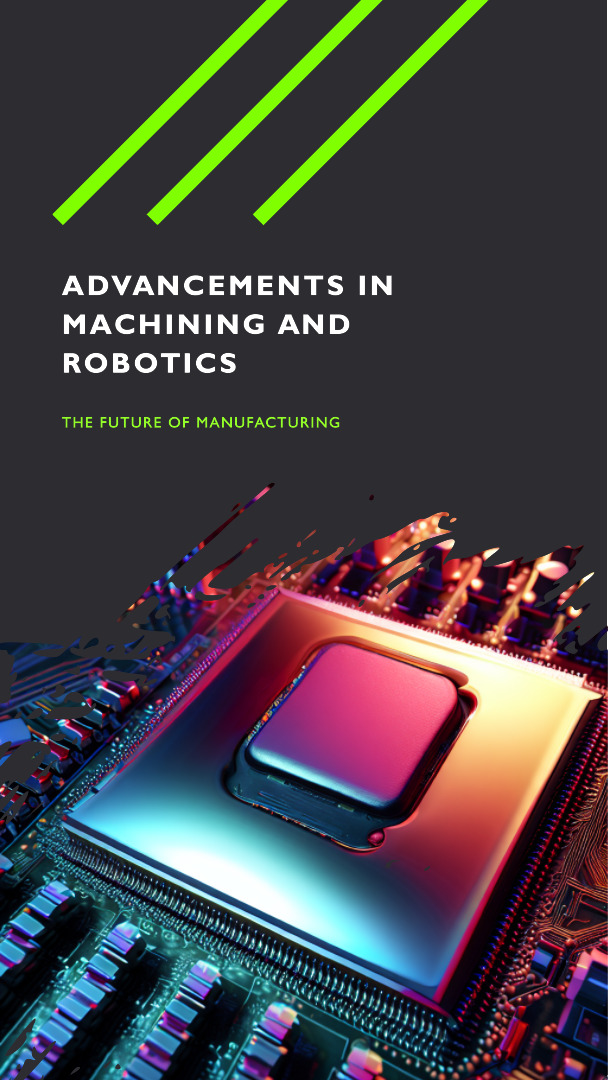Breaking News from the World of Machining and Robotics
The world of machining and robotics is constantly evolving, with groundbreaking innovations and advancements being made every day. In this article, we will delve into some of the most exciting developments, cutting-edge technologies, and emerging trends in this rapidly growing industry.
The Rise of Automation
Automation has revolutionized the manufacturing sector, enabling increased productivity, precision, and efficiency. Machine tools, once operated manually, are now being replaced by advanced robots and automated systems. These robots can perform complex tasks with higher accuracy and speed, reducing human error and improving overall production output.
Manufacturers across various industries are embracing automation to streamline their operations. From automotive and aerospace to electronics and healthcare, robotics and machining technologies are creating new possibilities. This shift towards automation is driven by the need for cost-effectiveness, improved quality control, and faster turnaround times.
The Integration of Artificial Intelligence (AI)
Artificial intelligence is playing a pivotal role in the advancement of machining and robotics. AI-powered machines can analyze and interpret vast amounts of data, enabling them to make autonomous decisions and adapt to changing circumstances. This has resulted in significant improvements in manufacturing processes, from product design and prototyping to quality assurance and predictive maintenance.
Machine learning algorithms are being utilized to optimize machining parameters, improving tool life and reducing cycle times. Cognitive robotics, a combination of AI and robotics, is enabling machines to learn and interact with their surroundings, making them more versatile and flexible in performing a wide range of tasks.
Industry 4.0 and the Internet of Things (IoT)
Industry 4.0, often referred to as the fourth industrial revolution, is driving the convergence of digital and physical technologies in manufacturing. The Internet of Things (IoT) is a central component of this revolution, connecting machines, devices, and systems to enable a seamless exchange of information and data analysis.
In the machining and robotics sector, IoT is transforming traditional factories into smart factories. Through real-time monitoring and data analytics, manufacturers can gather insights to optimize production processes, improve equipment utilization, and reduce downtime. Predictive maintenance, enabled by IoT, can identify potential machine failures before they occur, saving both time and resources.
Advancements in CNC Machining
Computer Numerical Control (CNC) machining has been a game-changer in the manufacturing industry, allowing for precise control and automation of machine tools. Recent advancements in CNC technology have further enhanced its capabilities, making it an indispensable tool for machining operations.
High-speed machining (HSM) has gained popularity, enabling faster cutting speeds, increased material removal rates, and improved surface finishes. Multi-axis CNC machines can perform complex machining operations, such as simultaneous milling and turning, reducing the need for multiple setups and increasing efficiency.
Additionally, additive manufacturing, commonly known as 3D printing, has emerged as a complementary technology to CNC machining. It allows for the rapid prototyping of complex parts and the production of customized components, revolutionizing the manufacturing process.
Applications in Aerospace and Healthcare Industries
The aerospace and healthcare industries are among the primary beneficiaries of advancements in machining and robotics. In aerospace, machining technologies are crucial for the production of lightweight components with intricate geometries, ensuring optimal performance and fuel efficiency.
Robotic systems are employed for various tasks in aerospace, including assembly, inspection, and maintenance. These robots can perform tasks that are too dangerous or intricate for humans, reducing the risk of errors and accidents.
In the healthcare sector, machining and robotics technologies are revolutionizing the field of medical devices, prosthetics, and surgical instruments. High-precision machining techniques ensure the production of intricate components that are critical for medical procedures. Surgical robots are enhancing surgical precision, reducing invasiveness, and enabling minimal scarring, leading to improved patient outcomes.
Conclusion
The world of machining and robotics is constantly evolving, bringing forth new possibilities and transforming industries. Automation, artificial intelligence, IoT, advancements in CNC machining, and applications in aerospace and healthcare are just a few of the exciting developments shaping this sector.
As we move forward, it is important to embrace these technological advancements, as they have the potential to revolutionize manufacturing processes, enhance productivity, and drive economic growth. The future of machining and robotics is indeed bright, and the possibilities are limitless.
**Note: The content above is written in markdown format for the given title “Breaking News from the World of Machining and Robotics”.
FAQ
1. How has automation revolutionized the manufacturing sector?
Automation has revolutionized the manufacturing sector by enabling increased productivity, precision, and efficiency. Advanced robots and automated systems can perform complex tasks with higher accuracy and speed, reducing human error and improving overall production output.
2. What role does artificial intelligence (AI) play in machining and robotics?
Artificial intelligence plays a pivotal role in machining and robotics by enabling machines to analyze and interpret vast amounts of data. AI-powered machines can make autonomous decisions and adapt to changing circumstances, resulting in significant improvements in manufacturing processes, from product design to quality assurance and predictive maintenance.
3. What is Industry 4.0 and how does it relate to machining and robotics?
Industry 4.0, also known as the fourth industrial revolution, refers to the convergence of digital and physical technologies in manufacturing. In the machining and robotics sector, Industry 4.0 is driving the transformation of traditional factories into smart factories. The Internet of Things (IoT) is a central component of this revolution, connecting machines, devices, and systems to enable a seamless exchange of information and data analysis.
4. How does the Internet of Things (IoT) impact the machining and robotics sector?
The Internet of Things (IoT) impacts the machining and robotics sector by transforming traditional factories into smart factories. Through real-time monitoring and data analytics, manufacturers can gather insights to optimize production processes, improve equipment utilization, and enhance overall efficiency. IoT enables a seamless exchange of information and enables better decision-making in the machining and robotics industry.


One Reply to “Breaking news from the world of machining and robotics”